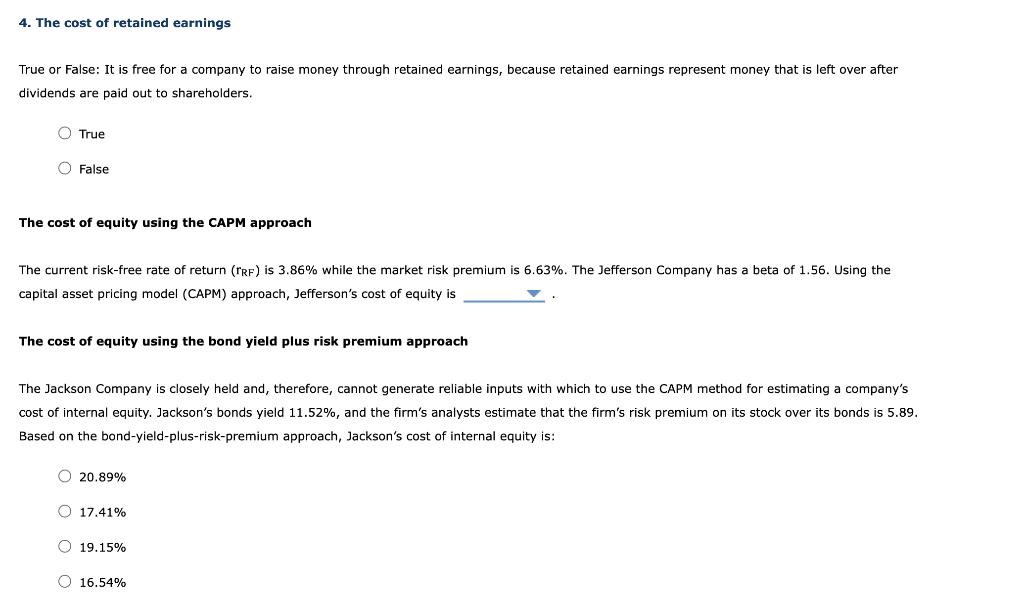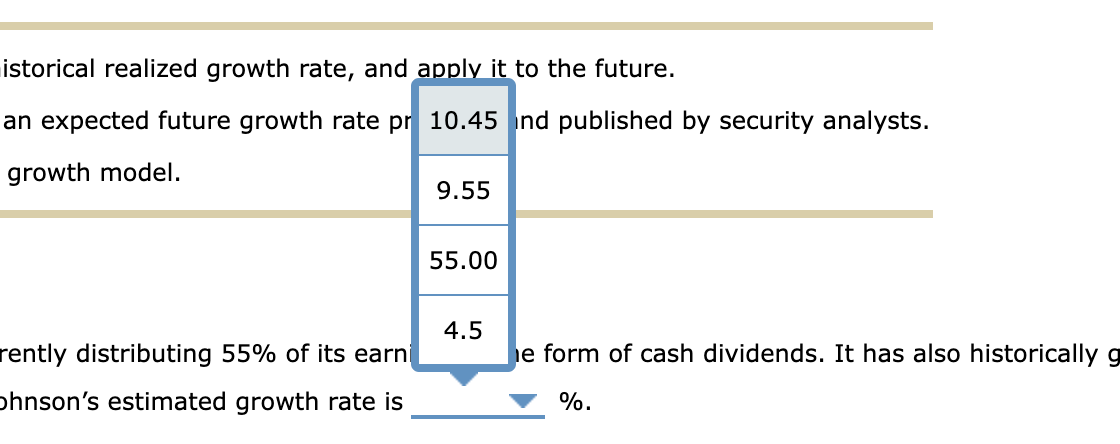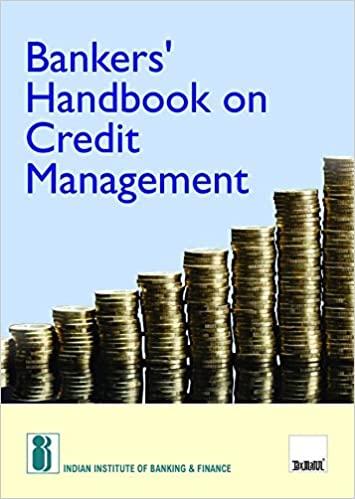



4. The cost of retained earnings True or False: It is free for a company to raise money through retained earnings, because retained earnings represent money that is left over after dividends are paid out to shareholders. O True O False The cost of equity using the CAPM approach The current risk-free rate of return (TRF) is 3.86% while the market risk premium is 6.63%. The Jefferson Company has a beta of 1.56. Using the capital asset pricing model (CAPM) approach, Jefferson's cost of equity is The cost of equity using the bond yield plus risk premium approach The Jackson Company is closely held and, therefore, cannot generate reliable inputs with which to use the CAPM method for estimating a company's cost of internal equity. Jackson's bonds yield 11.52%, and the firm's analysts estimate that the firm's risk premium on its stock over its bonds is 5.89. Based on the bond-yield-plus-risk-premium approach, Jackson's cost of internal equity is: 20.89% 17.41% O 19.15% O 16.54% The current risk-free rate of return (TRF) is 3.86% while the market risk premium is 6.63%. The Jefferson Company has a beta of 1.56. Using the capital asset pricing model (CAPM) approach, Jefferson's cost of equity is The cost of equity using the bond yield plus risk premium approach 14.91% 14.20% with which to use the CAPM method for estimating a company's 12.78% The Jackson Company is closely held and, therefore, cannot generate relia cost of internal equity. Jackson's bonds yield 11.52%, and the firm's analy Based on the bond-yield-plus-risk-premium approach, Jackson's cost of int 15.62% y is: e that the firm's risk premium on its stock over its bonds is 5.89. 20.89% The cost of equity using the discounted cash flow (or dividend growth) approach Johnson Enterprises's stock is currently selling for $25.67 per share, and the firm expects its per-share dividend to be $2.35 in one year. Analysts project the firm's growth rate to be constant at 7.27%. Estimating the cost of equity using the discounted cash flow (or dividend growth) approach, what is Johnson's cost of internal equity? O 17.24% O 15.60% O 16.42% O 20.53% Estimating growth rates It is often difficult to estimate the expected future dividend growth rate for use in estimating the cost of existing equity using the DCF or DG approach. In general, there are three available methods to generate such an estimate: Carry forward historical realized growth rate, and apply it to the future. Locate and apply an expected future growth rate prepared and published by security analysts. Use the retention growth model. Suppose Johnson is currently distributing 55% of its earnings in the form of cash dividends. It has also historically generated an average return on equity (ROE) of 10%. Johnson's estimated growth rate is %. istorical realized growth rate, and apply it to the future. an expected future growth rate pr 10.45 and published by security analysts. growth model. 9.55 55.00 4.5 rently distributing 55% of its earni ohnson's estimated growth rate is e form of cash dividends. It has also historically g %










